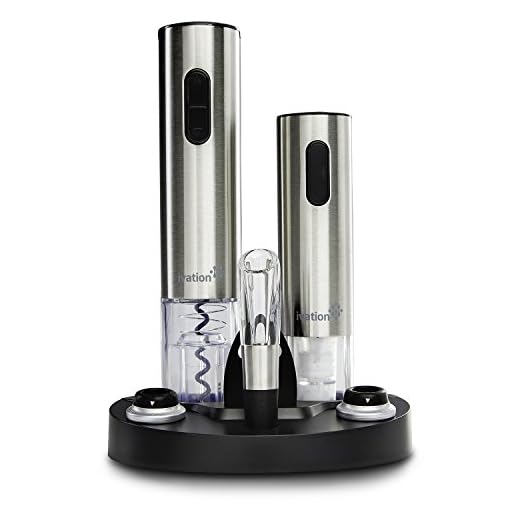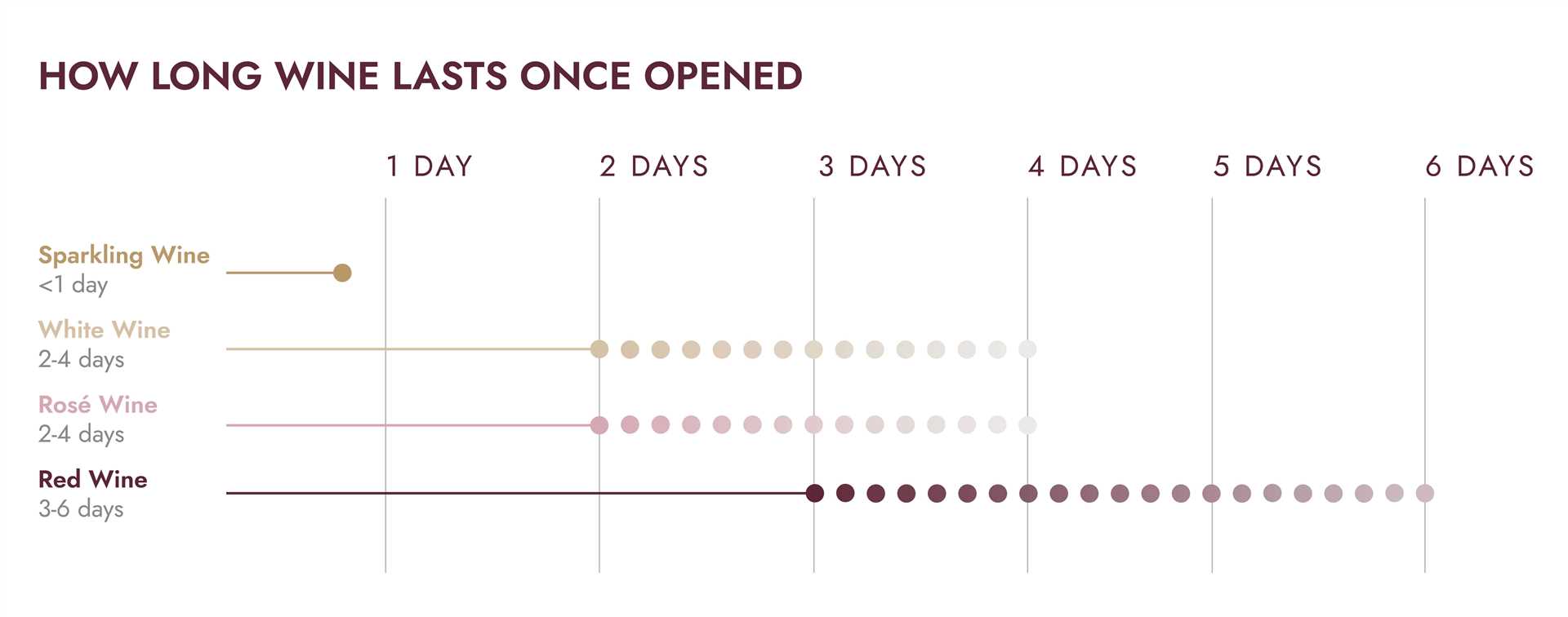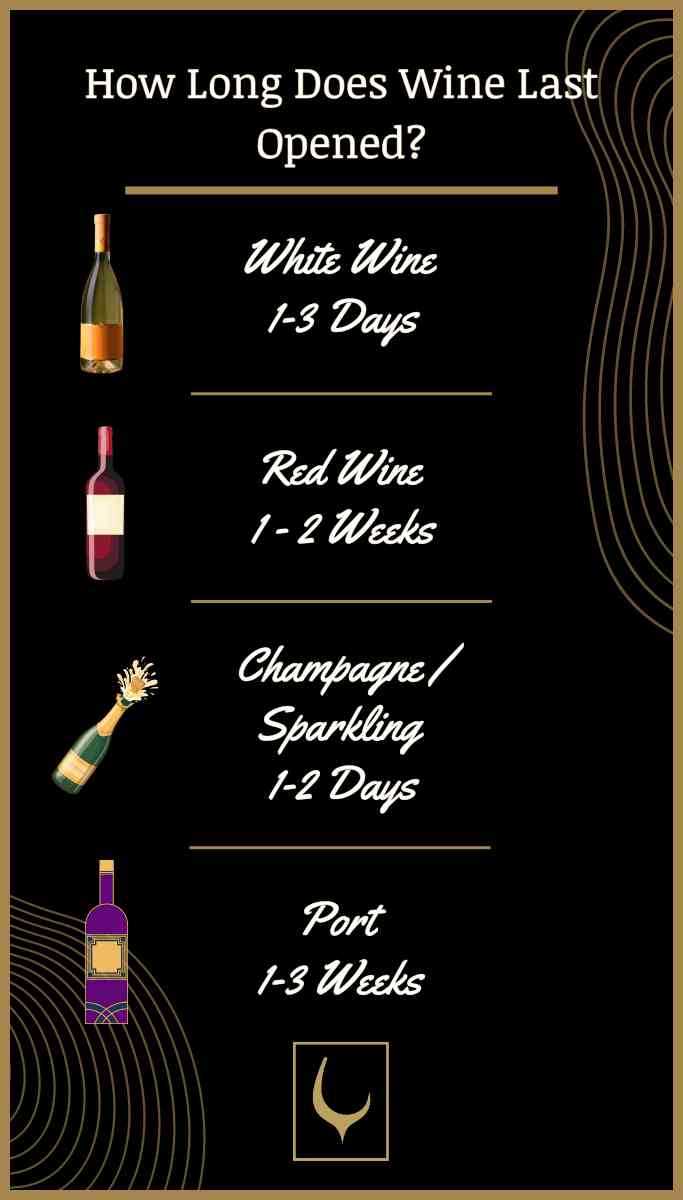



Once a bottle is uncorked, its contents begin to evolve. Generally, a good approach is to consume it within three to five days for optimal flavor. Exposure to oxygen starts a process of oxidation, which can alter the taste profile significantly. Therefore, paying attention to storage conditions becomes paramount.
Seal the bottle tightly and store it in a cool, dark place. Refrigeration can extend its life, especially for those varieties with higher tannin levels, which provide better resistance to spoilage. A vacuum pump can also be an excellent investment, as it removes air from the bottle, slowing down the oxidation process.
If you notice any off aromas or flavors, it likely indicates deterioration. A sour or vinegar-like scent is a clear sign that it’s time to part ways with the remaining liquid. Trust your senses; they guide you well in these matters.
Preservation of Opened Bottles
Once a bottle is uncorked, it begins to deteriorate. Typically, consumption within three to five days is ideal to enjoy it at its best quality. However, proper storage can extend its lifespan significantly.
Storage Techniques

- Re-cork the bottle tightly to minimize exposure to air.
- Store upright to reduce the surface area exposed to oxygen.
- Keep in a cool, dark place or a refrigerator to slow oxidation.
Indicators of Decline

Be vigilant for signs of spoilage:
- A noticeable change in aroma, often resembling vinegar.
- Off-putting flavors that deviate from the original profile.
- Cloudiness or sediment that wasn’t present initially.
Utilizing a vacuum pump can help remove excess air from the bottle, further preserving the contents. It’s wise to taste before serving, ensuring it still meets your expectations.
Understanding How Oxygen Affects Opened Red Wine

Exposure to oxygen can significantly alter the characteristics of an opened bottle. Once uncorked, a bottle begins to interact with air, initiating a process known as oxidation. This reaction can enhance flavors initially, often bringing out subtle notes and textures that were previously muted. However, too much oxygen leads to deterioration, resulting in unpleasant tastes and aromas.
To maximize the enjoyment of your drink, aim to consume it within three to five days. During this period, the beneficial effects of controlled oxidation can be appreciated. Beyond this timeframe, the risk of spoilage increases. Storing the bottle in a cool, dark place with a tight seal can slow down the oxidation process, helping to preserve its integrity for a longer duration.
Investing in vacuum sealers or inert gas preservation systems can further extend the lifespan of an opened bottle. These tools help to reduce the amount of oxygen in contact with the liquid, allowing you to savor the drink longer without compromising flavor. Remember, the key is to strike a balance; too little air can stifle the wine’s development, while too much can lead to rapid decline.
Signs That Your Opened Beverage Has Spoiled
Visual cues are the first indicators of spoilage. Look for a dull or cloudy appearance, which signifies a breakdown in quality. If you notice sediment at the bottom that wasn’t present before, that’s another warning sign.
Olfactory assessment is crucial. A sour or vinegary aroma indicates oxidation or bacterial growth. Fresh fruit and floral notes should dominate; any deviation suggests deterioration.
Taste is the final test. If the flavor is overly sour, flat, or resembles vinegar, it’s best to discard the bottle. A harmonious balance of acidity, fruit, and tannins should be present; a lack of complexity often points to spoilage.
Storage conditions also matter. Exposure to excessive heat or light can accelerate spoilage. If it’s been left open for an extended period, the chances of it going off increase significantly.
Always trust your senses. If something seems off, it’s safer to err on the side of caution and not consume the liquid. Quality matters, and enjoying your drink should be a pleasant experience.
Optimal Storage Tips for Opened Wine
Store your beverage upright in the fridge to minimize oxidation. The cooler temperature slows down the aging process significantly. An unopened bottle can last for years, but once uncorked, the exposure to air accelerates spoilage.
Utilize a vacuum pump to extract air from the bottle, creating a seal that limits oxidation. If you don’t have one, consider using a wine stopper designed to reduce air contact. These tools can extend freshness for several days more.
Consider the Environment
Keep the bottle in a dark place, away from direct sunlight, which can degrade flavors. A consistent temperature is crucial; avoid areas with fluctuating conditions, as this can negatively impact the taste.
Pairing with Food
When serving your beverage, consider pairing it with dishes that complement its flavors. For example, if you’re enjoying a hearty meal, like a how to cook a beef shoulder roast in the oven, ensure your beverage enhances the experience.
How Long Can You Keep Opened Red Wine?
Opened bottles typically maintain quality for about 3 to 5 days, depending on factors like type, storage conditions, and initial quality. Lighter varieties tend to spoil faster than fuller-bodied options.
The following table outlines the approximate longevity of various styles in an opened state:
| Type | Storage Duration |
|---|---|
| Light-bodied Reds | 3 days |
| Medium-bodied Reds | 3 to 5 days |
| Full-bodied Reds | 5 to 7 days |
Temperature plays a significant role; keep the bottle in a cool, dark place or in the refrigerator to extend freshness. Using a wine preservation system can add extra days to its lifespan, preserving flavors and aromas. Always taste before serving to ensure quality remains intact.
Best Practices for Re-corking and Sealing Red Wine
To maintain the integrity of an opened bottle, follow these steps for optimal re-corking and sealing:
- Use the Original Cork: If it’s still in good shape, reinsert the original cork with the same end that was inside the bottle facing down.
- Utilize a Wine Stopper: A vacuum wine stopper can effectively reduce air exposure. These stoppers often come with a pump to create a vacuum seal.
- Consider a Bottle Seal: Silicone or rubber bottle seals provide an airtight closure, preventing oxidation.
- Store Upright: If using a cork instead of a stopper, position the bottle upright to minimize contact between the liquid and oxygen.
- Temperature Control: Keep the bottle in a cool, dark place, ideally between 55°F and 65°F (13°C – 18°C), to slow down deterioration.
- Avoid Temperature Fluctuations: Maintain a consistent temperature to prevent expansion and contraction of the liquid, which can let air in.
By implementing these practices, you can significantly extend the life of your opened bottle and preserve its flavors and aromas for a more enjoyable experience later on.
When to Discard Opened Bottles: A Practical Guide
Once a bottle is uncorked, it’s best to consume it within three to five days for optimal enjoyment. Beyond this period, the taste may deteriorate significantly.
Specific indicators signal that it’s time to let go of an opened bottle. If you notice an off-putting odor or a vinegar-like scent, it’s a clear sign of spoilage. Additionally, any noticeable change in color, particularly darkening or browning, suggests that oxidation has compromised the quality.
While some bottles can last a bit longer, factors such as the initial quality, storage conditions, and closure type influence longevity. Generally, lighter-bodied varieties tend to spoil faster than their fuller counterparts.
If you’re unsure about the state of an opened bottle, trust your palate. A bitter or overly sour taste indicates it’s best to discard it. Always prioritize enjoyment over nostalgia when deciding whether to pour it out.
FAQ:
How long can red wine last after opening?
Once opened, a bottle of red wine can typically last for about 3 to 5 days before it starts to deteriorate in quality. This duration can vary depending on the type of wine and how it’s stored. To extend its lifespan, it’s best to recork the bottle tightly and store it in a cool, dark place, away from direct sunlight. If you notice any off smells or flavors, it’s a sign that the wine has gone bad and should not be consumed.
What signs indicate that red wine has gone bad after opening?
Several indicators can signal that red wine has spoiled. Common signs include an unpleasant odor, which may smell like vinegar or sour fruit, and a change in flavor, making it taste flat or overly acidic. Additionally, if you notice any significant changes in color, such as browning, that might also be a red flag. If you have any doubts about the wine’s quality, it’s safer to avoid drinking it.
Can I still drink red wine that has been open for a week?
Drinking red wine that has been open for a week is generally not advisable, as the wine is likely to have deteriorated significantly in flavor and aroma. While some wines may still be safe to consume after a week, they often taste unpleasant and may not provide the enjoyable experience intended. If you find yourself with an open bottle longer than recommended, it’s best to consider alternative ways to use it, such as cooking, instead of drinking it straight.









